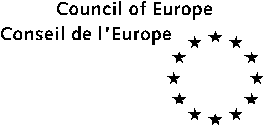
Convention on
the Conservation
of European Wildlife and Natural Habitats
Standing Committee
Resolution no. 1 (1989) of the standing committee on the provisions relating to the conservation of habitats
(Adopted by the Standing Committee of 9 June 1989)
The Standing Committee of the Convention on the Conservation of European Wildlife and Natural Habitats, acting under the terms of Article 14 of the convention,
Having regard to the obligations laid down by the convention, particularly in Articles 1, 2, 3, 4, 6.b and 9;
Conscious of the fact that most of these obligations bind Contracting Parties as to the results to be attained, while leaving them the choice of the means to be used for that purpose;
Recognising, however, that the absence of a common interpretation of certain provisions of the convention, and certain terms contained therein, may lead to considerable differences in the legal interpretation of the convention by individual Contracting Parties and may undermine the effectiveness of the convention;
Desirous to promote agreement, as much as possible, among Contracting Parties as to what is required to be done in order to implement the convention;
Convinced that a common interpretation of certain of the provisions and terms of the convention, particularly in Articles 4, 6.b and 9, will facilitate the achievement of the aims of the convention in a harmonised way by all Contracting Parties,
Resolves that, for the purpose of improving the effectiveness of the convention, the terms listed hereunder are to be interpreted as follows:
1. For the purpose of the convention:
a. "habitat" of a species (or population of a species) means the abiotic and biotic factors of the environment, whether natural or modified, which are essential to the life and reproduction of members of that species (or population of that species) and which occur within the natural geographical range of the species (or population of that species);
b. "natural habitat" means a biotope, that is a distinctive type of terrestrial or aquatic area distinguished by geographic, abiotic or biotic features, whether entirely natural or modified as a result of human activities;
2. For the purpose of Article 4:
a. "necessary measures" means in particular those measures which are required:
i. to ensure the conservation of the habitats of those species which have been identified by the Standing Committee, on the basis of scientific evidence, as requiring specific habitat conservation measures and, most particularly, of those part of their geographical range which are essential for the conservation of those species (hereinafter referred to as "critical sites");
ii. to ensure the conservation of those natural habitats which have been identified by the Standing Committee, on the basis of scientific evidence, as being endangered natural habitats and requiring specific conservation measures;
b. "appropriate measures" means in particular those measures, pursuant to paragraph a above, which are able to ensure the conservation of the habitat of particular species or of particular natural habitats;
c. "conservation" means the maintenance and, where appropriate, the restoration or improvement of the abiotic and biotic features which form the habitat of a species or a natural habitat, as defined in paragraph l above, and includes, where appropriate, the control of activities which may indirectly result in the deterioration of such habitats, including areas of importance for the migratory species specified in Appendices II and III, even where such areas are outside the jurisdiction of the Party in question;
d. "areas of importance for the migratory species specified in Appendices II and III" means the critical sites, wherever situated, of those migratory species which have been identified by the Standing Committee, on the basis of scientific evidence, as requiring specific habitat conservation measures;
e. the conditions attached by Article 9 to the making of exceptions from the provisions of Article 4, as well as the obligation laid down in that article to report such exceptions to the Standing Committee, shall apply to:
i. the critical sites of those species which have been identified by the Standing Committee, pursuant to paragraph a.i above;
ii. natural habitats which have been identified by the Standing Committee, pursuant to paragraph a.ii above;
iii. areas of importance for migratory species which have been identified by the Standing Committee, pursuant to paragraph d above;
3. For the purpose of Article 6.b:
a. "breeding and resting sites" means, in respect of each species for which the Standing Committee has identified that breeding and/or resting sites require protection, those breeding and/or resting site types in respect of which the Standing Committee has considered that such measures are required;
b. "deliberate damage to or destruction of breeding or resting sites" means, subject to relevant provisions of the law of each Contracting Party, any act committed with the intention of destroying or causing harm to breeding or resting sites as defined in paragraph a above, and any act committed without the intention to cause damage or destruction but in the knowledge that such would probably by the consequences of the act;
c. the conditions attached by Article 9 to the making of exceptions from the provisions of Article 6.b, as well as the obligation, laid down in that article, to report these exceptions to the Standing Committee, only apply to those breeding and resting site types in respect of which the Standing Committee has considered that they require protection pursuant to paragraph a above.